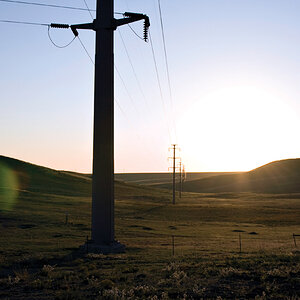fjrabon
Been spending a lot of time on here!
- Joined
- Nov 3, 2011
- Messages
- 3,644
- Reaction score
- 754
- Location
- Atlanta, GA, USA
- Can others edit my Photos
- Photos OK to edit
Sure, but I thought we were solely talking about total DoF (what I think most people mean when they talk about DoF in my experience), not front/back distributions. Front/back DoF ratios are obviously solely a function of focal point distance in relation to the hyperfocal distance.But if it could be that simple then you should be able to run variants on the DOF Master calculator using different focal lengths and as long the magnification is the same you should get the same DOF -- you'll get the same total DOF but you'll get different front/back distributions so focal length isn't really canceled out.Since I can get the same magnification with different focal lengths (just alter distance), then focal length is not directly a factor in DOF. Is that going to work?
Yes, sure that works, that's exactly what direct versus indirect causation means. A direct cause causes something... directly. An indirect cause causes something through its influence on another factor.
The direct factors are aperture and magnification.
DOF = f/stop + magnification. (I even have that as the right answer on an exam!) But the caveat is that it's an oversimplification. When you break down magnification you can't say that the specific factor values cancel as long as they add up to the same magnification value -- it's not that clean; be nice if it was. So we at least have to write this: DOF = f/stop + magnification*
And when you flesh out that asterisk the sub factors carry weight.
Joe
also im sure at this point the op is sufficiently confused by this when im pretty sure we are more or less ultimately in agreement since im sure we both ultimately understand how DoF works in all its gory detail.
Last edited:






![[No title]](/data/xfmg/thumbnail/42/42487-e35b2848c41aeeb5a93f21809f036a1d.jpg?1619740196)







